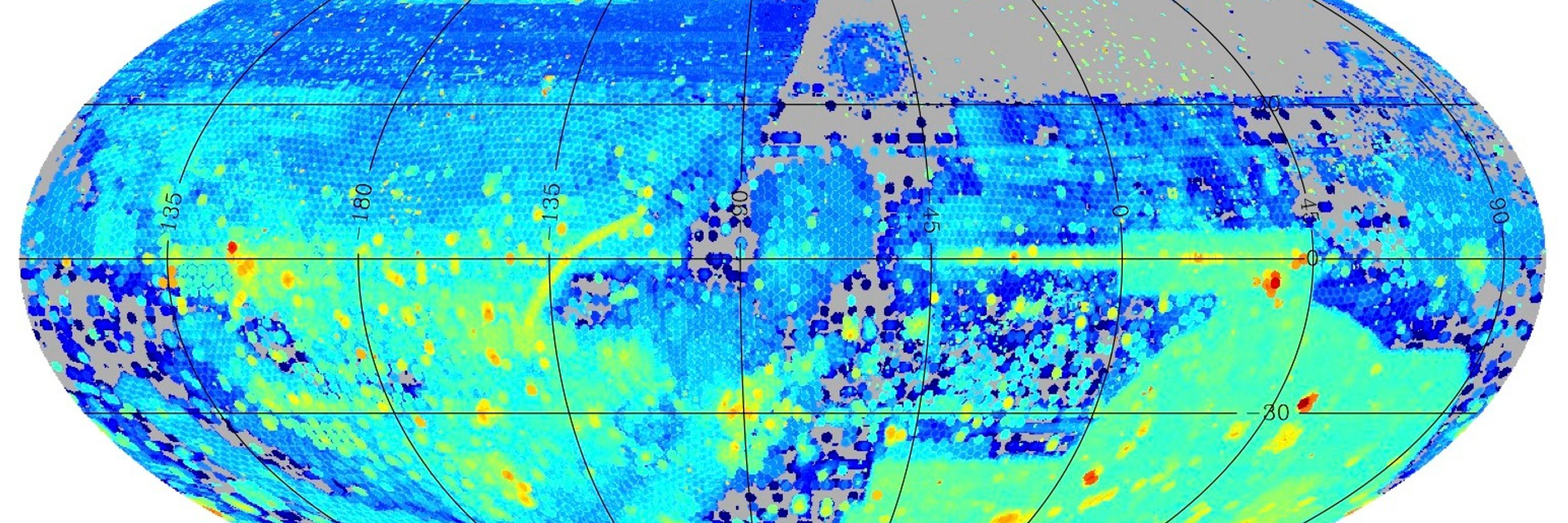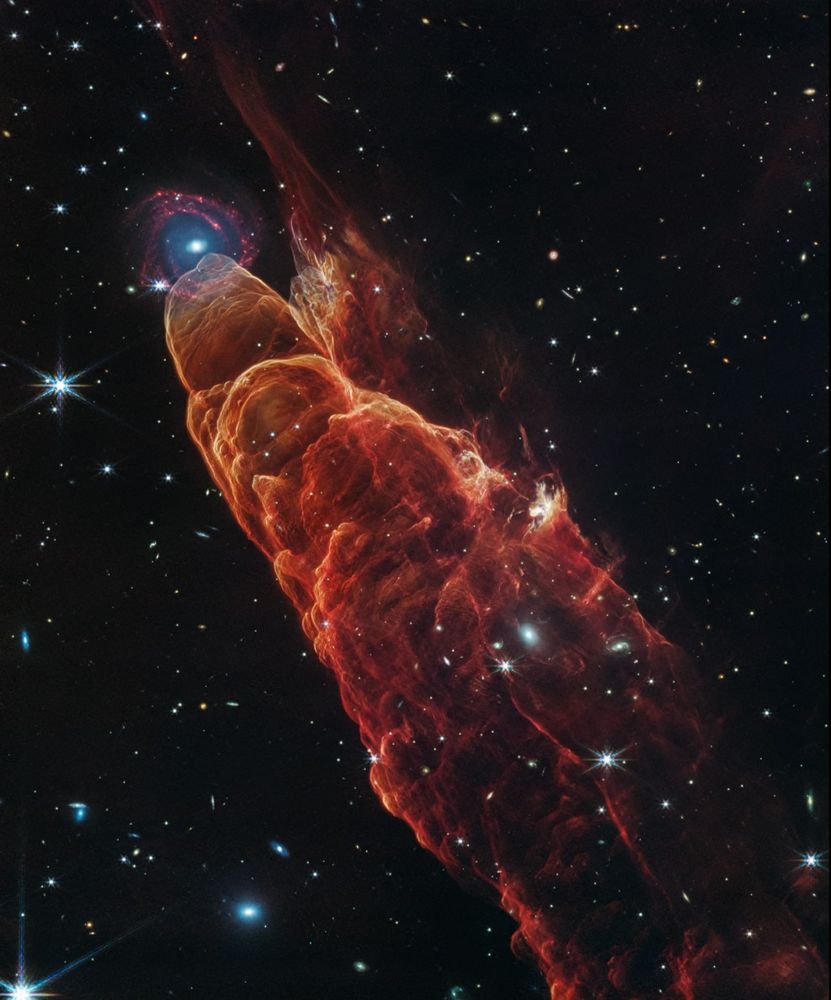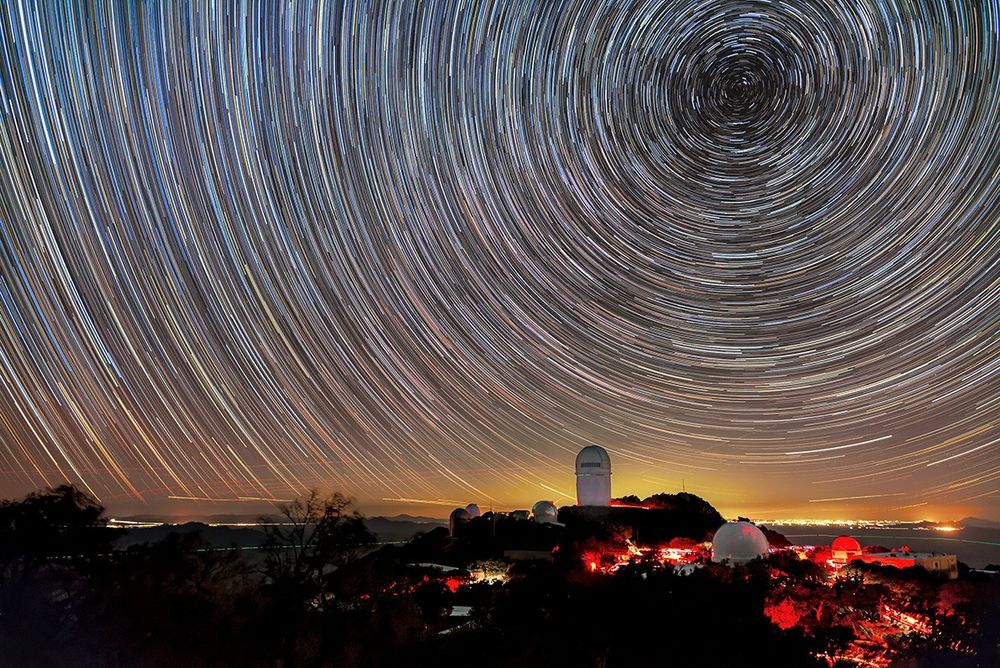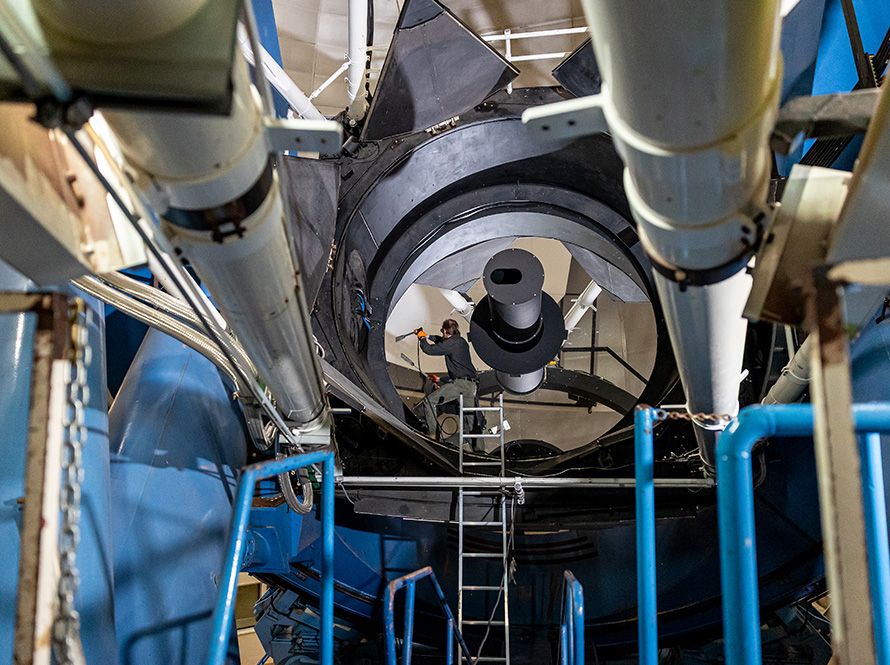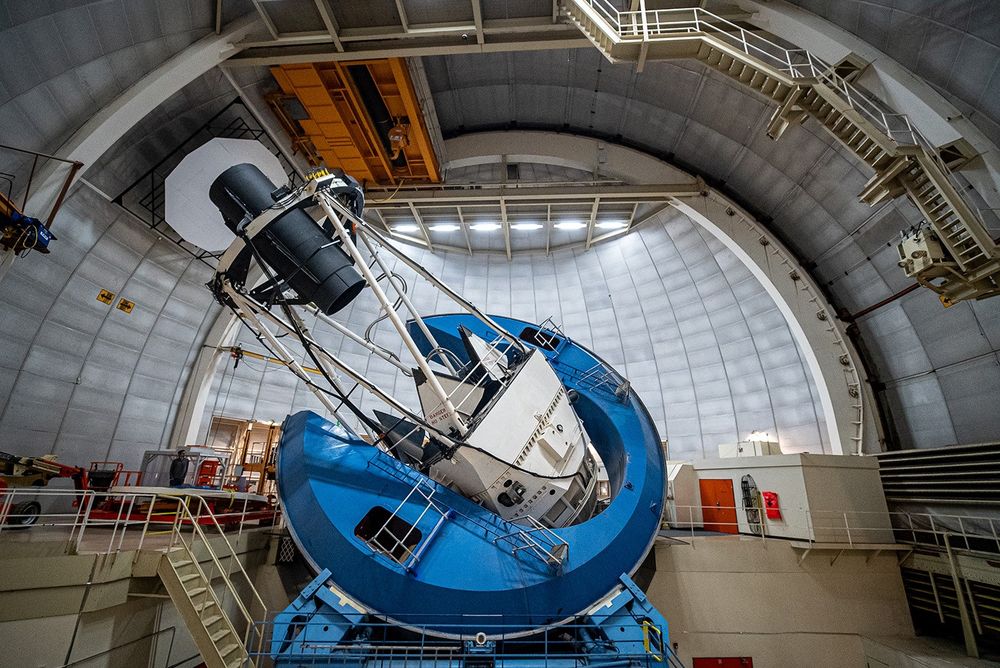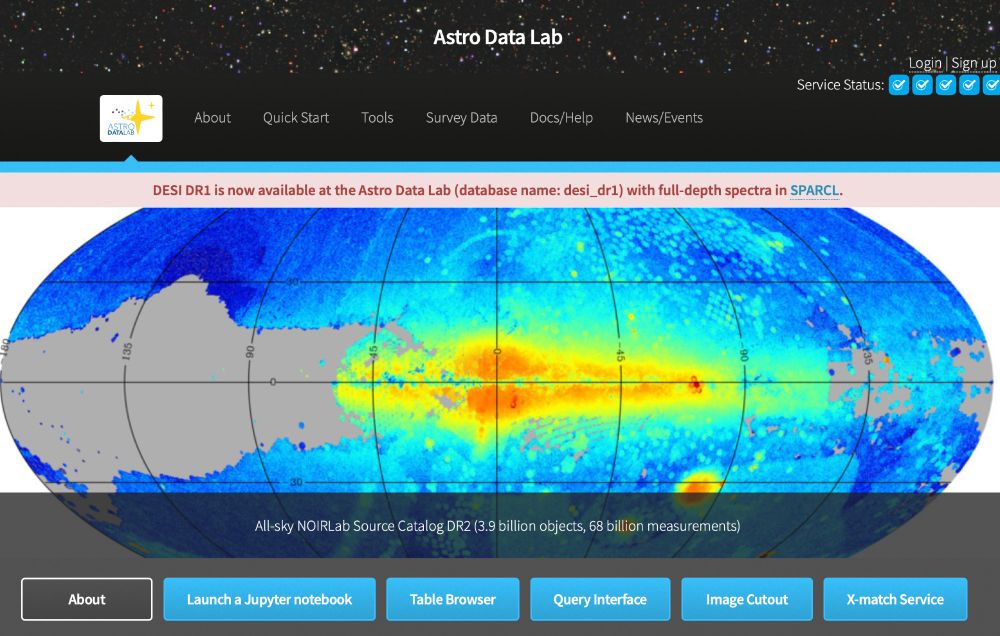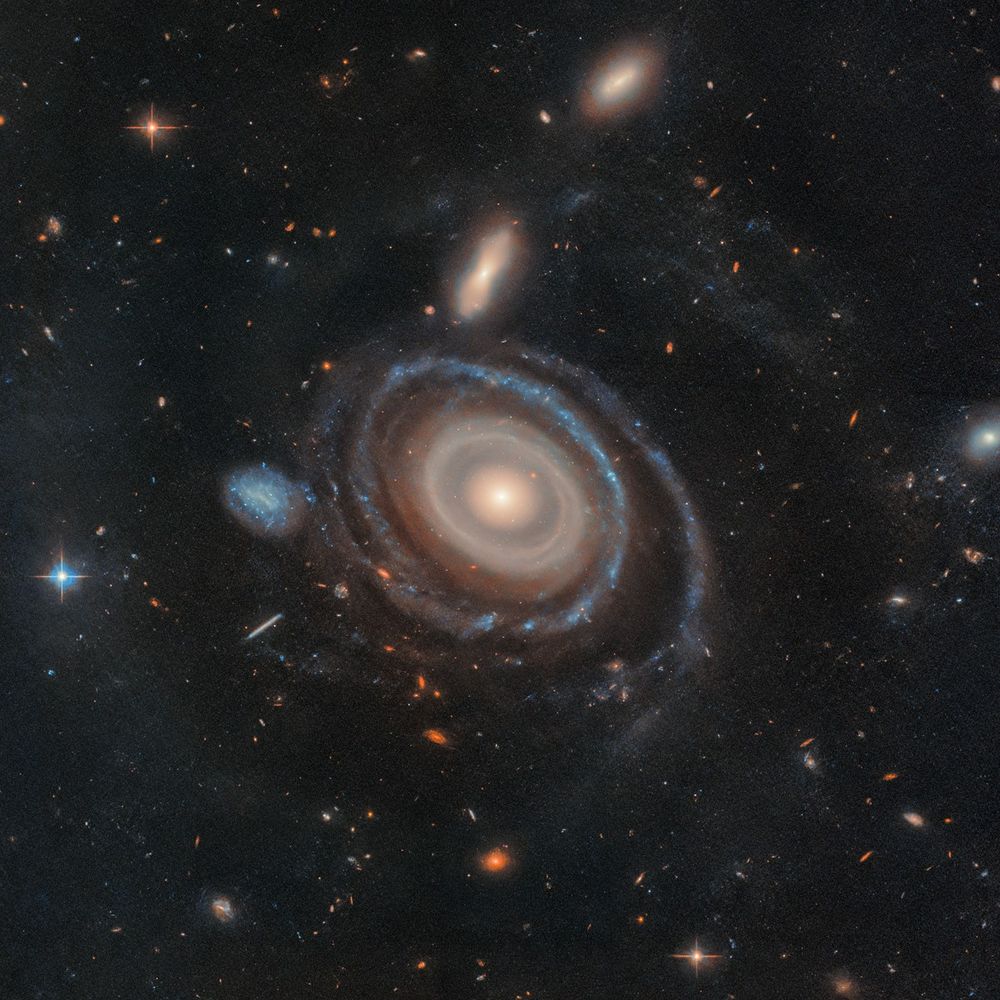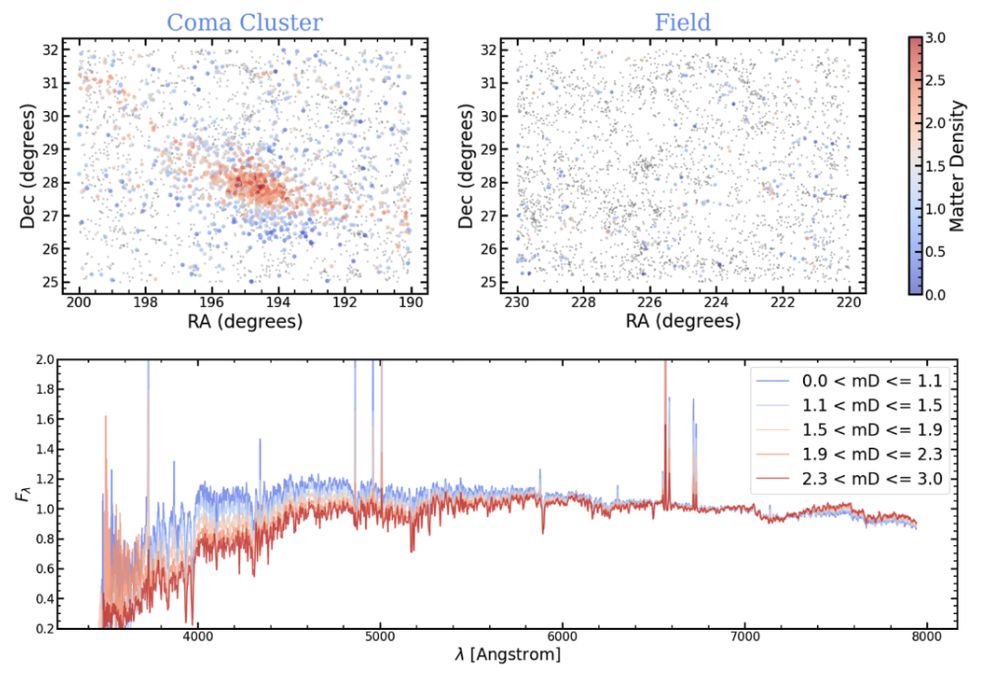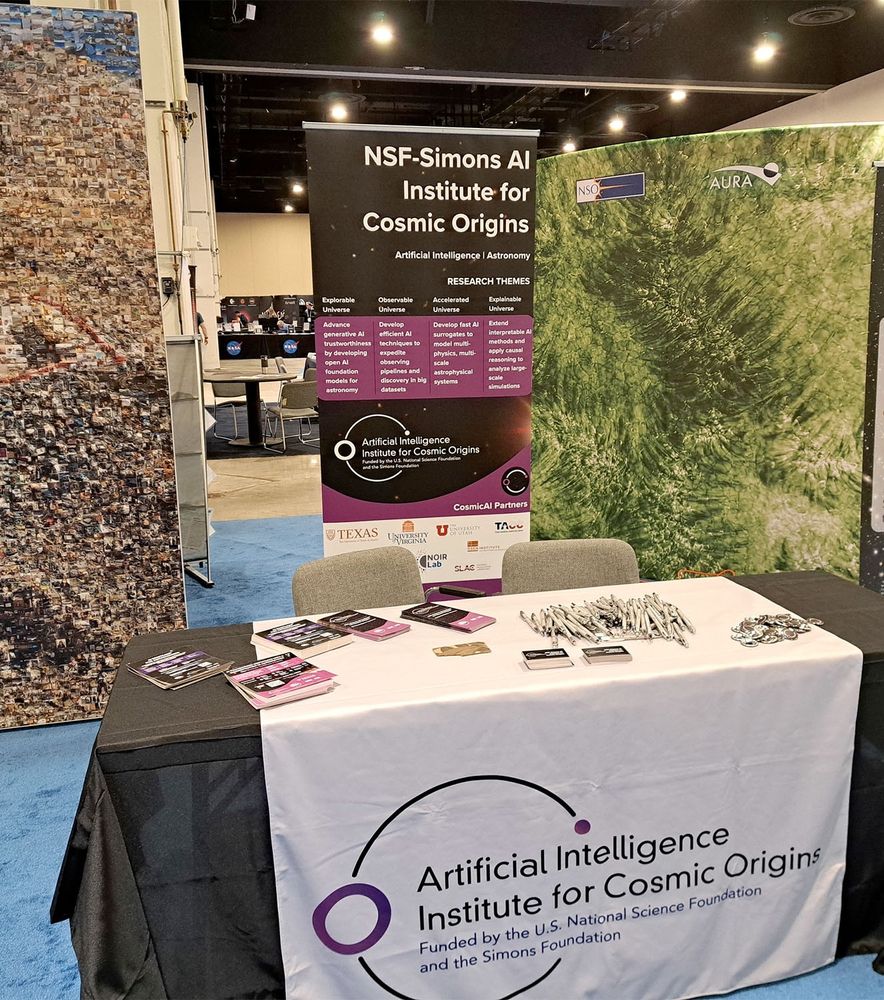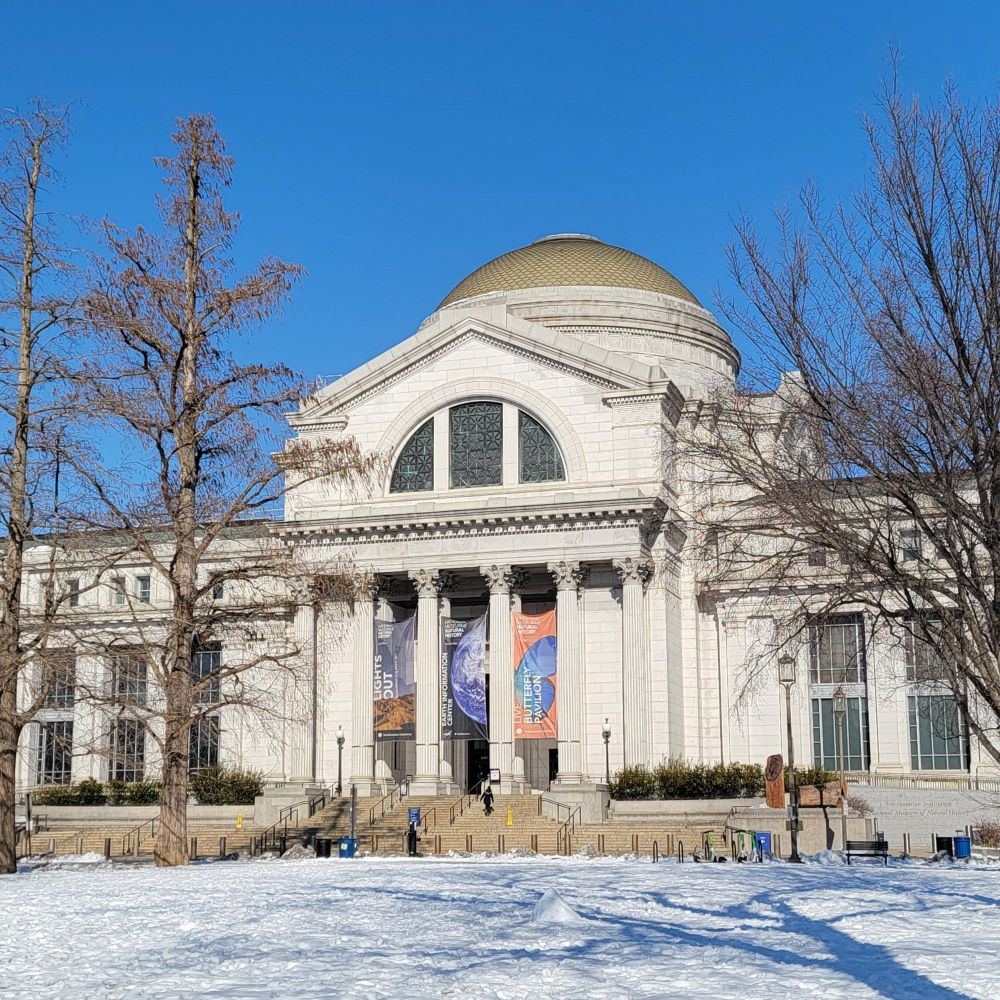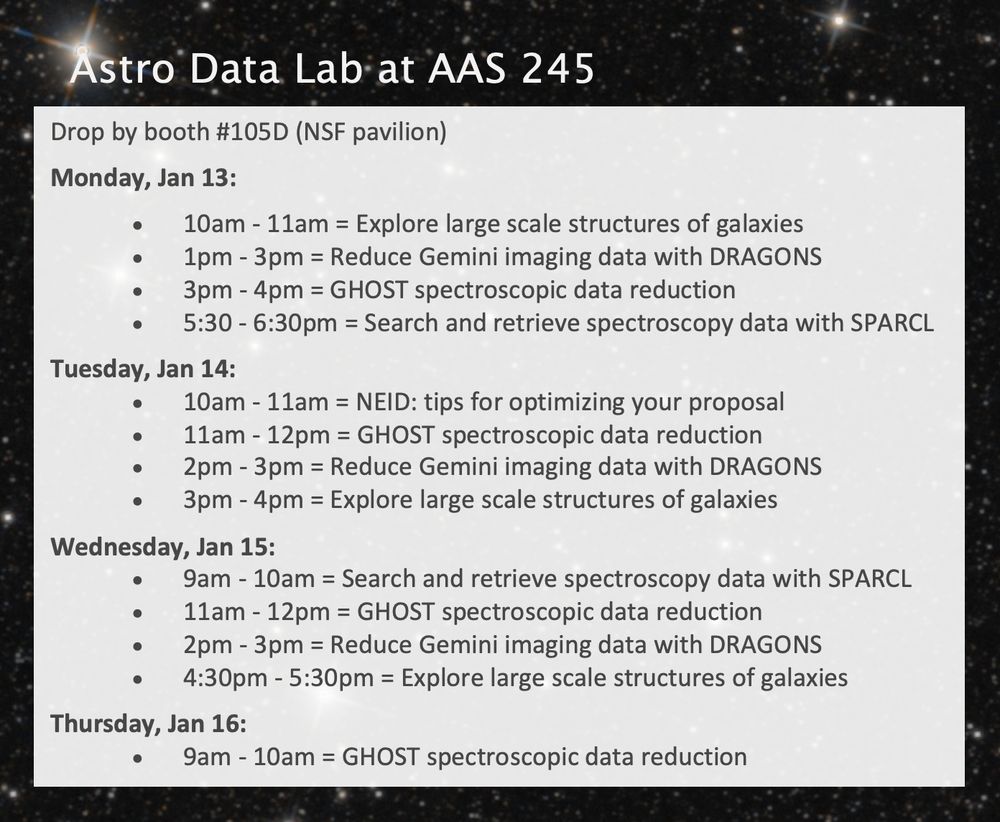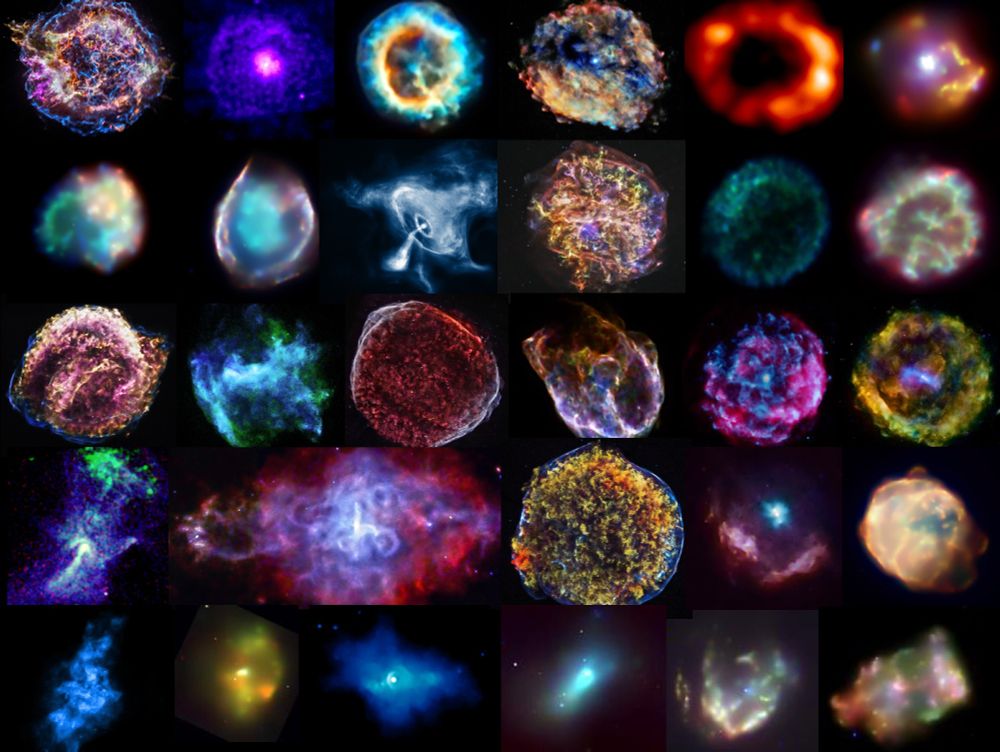Astro Data Lab
@astrodatalab.bsky.social
120 followers
160 following
12 posts
The Astro Data Lab at NSF NOIRLab: a science platform with preinstalled software for astronomy research.
https://datalab.noirlab.edu/
#python #jupyter #astronomy #research #datascience
Posts
Media
Videos
Starter Packs
Reposted by Astro Data Lab
Reposted by Astro Data Lab
Reposted by Astro Data Lab
Reposted by Astro Data Lab
Astro Data Lab
@astrodatalab.bsky.social
· Jan 16
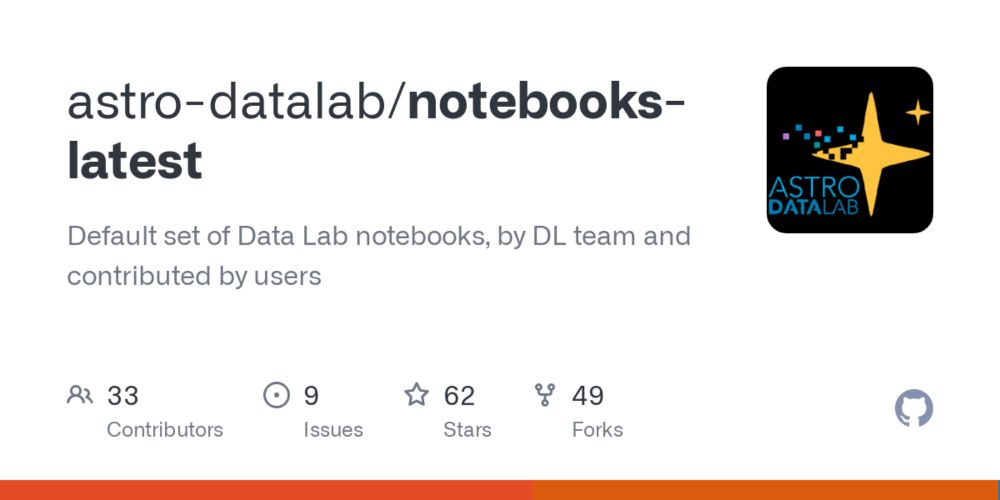
notebooks-latest/03_ScienceExamples/LargeScaleStructure/LargeScaleStructureSdssCosmicSlime.ipynb at master · astro-datalab/notebooks-latest
Default set of Data Lab notebooks, by DL team and contributed by users - astro-datalab/notebooks-latest
github.com
Reposted by Astro Data Lab
Reposted by Astro Data Lab
Astro Data Lab
@astrodatalab.bsky.social
· Jan 11
Astro Data Lab
@astrodatalab.bsky.social
· Jan 11
Astro Data Lab
@astrodatalab.bsky.social
· Jan 11
Reposted by Astro Data Lab
Reposted by Astro Data Lab
Sesh Nadathur
@seshnadathur.bsky.social
· Nov 20
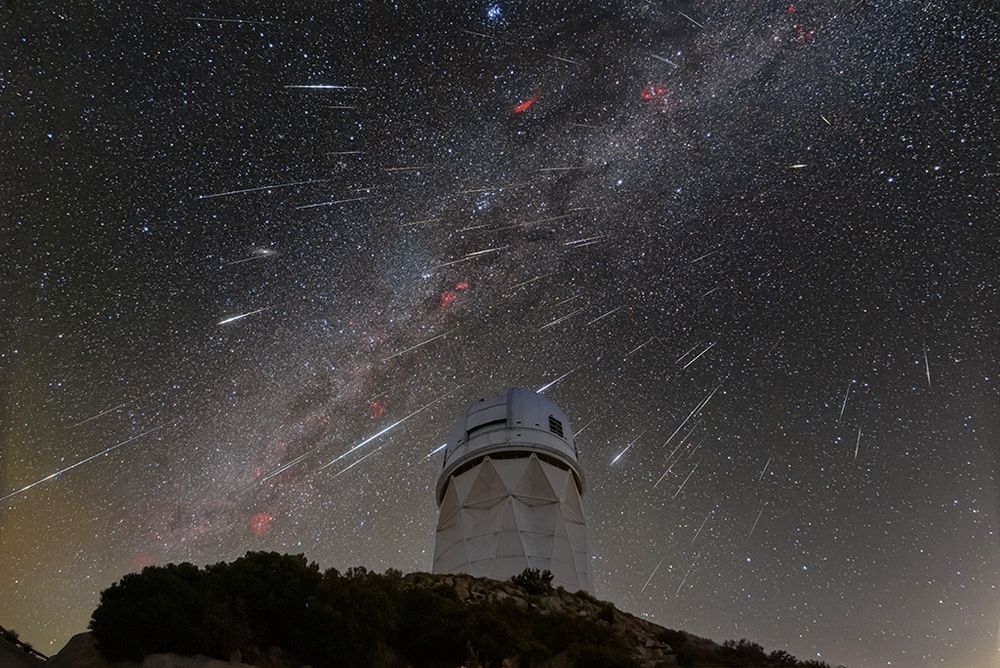
New DESI Results Weigh In On Gravity
Researchers used the Dark Energy Spectroscopic Instrument to map how nearly 6 million galaxies cluster across 11 billion years of cosmic history. Their observations line up with what Einstein's theory...
newscenter.lbl.gov
Reposted by Astro Data Lab
Astronomy Feeds News
@astronomy.blue
· Aug 5
